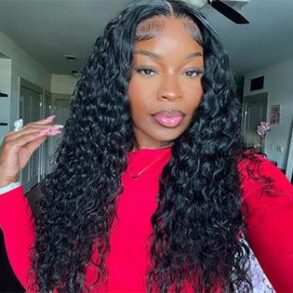CA: Where is the line?
The first time I realized what cultural appropriation was, I was in middle school. It was around Halloween, and I saw posts on Instagram stating that wearing Native American cultural attire was cultural appropriation and incredibly disrespectful to Native Americans. Their culture was being taken and made into a joke by non-Indigenous kids wearing imitation headdresses to Halloween parties. I understood this perspective as I thought it would be weird if someone who wasn’t Black dressed as a Black stereotype for Halloween.
Despite cultural appropriation becoming an important conversation, many people still participate in it whether they know it or not. Sooner or later, people tried to establish what constituted CA and what didn’t. For example, my decision to cook another culture’s food for myself and a couple of friends would not be cultural appropriation, but walking around in a SHEIN-ified version of their cultural clothing would be. The key difference is in the way cultural aspects are being expressed. Food is global, especially in the current age, so someone cooking a meal from another culture for themselves isn’t usually viewed negatively.
However, taking something like agua fresca and calling it ‘spa water’ is blatant appropriation, as the beverage was stripped of its cultural context and slapped with a new label. This is an example of one of the three aspects of cultural co-opting I’ve observed on social media: reinvention.
Sharing Culture on Social Media: What is Lost and What is Gained
This article is not saying cultural practices shouldn’t be shared on social media. In fact, I believe sharing our cultures is a great way to become global citizens and foster empathy for each other. However, what has happened to the Black and African American communities is especially troubling, given our history in the United States. Our mannerisms, slang, hairstyles, fashion, music, and more have been looped into American culture more broadly, and more often than not credit isn’t given to the original Black creators. This can be said of many other cultures, given the vast amount of identities represented in the US, but I’d be willing to argue that Black culture in the US has experienced this the most.
So, it’s not hard to understand why some Black people are skeptical about sharing. We’ve been criticized for every cultural practice we have in one way or another, mocked for wanting to set boundaries, and told to get over ourselves for wanting our culture to be ours.
So, despite the benefits of culture sharing on social media, there can and should be a line between what is acceptable and what isn’t. To attempt to establish this, I want to explain three phenomena that I’ve seen on social media with regard to cultural co-opting: reinvention, downplaying, and gatekeeping.
Reinvention
By now, I’m sure we’ve all seen some version of the “clean girl” aesthetic and “brownie glazed lips” trends on social media. Slick buns, gold hoops, and brown-lined lips with lip gloss on top are not new. These are trends now but have been staples of Black and brown women for decades. We’ve slicked our hair to tame our curls, worn gold hoops, and lined our lips in shades closer to our own for generations.
This seems to be a sneakier version of appropriation, as it’s not as overt as wearing box braids or durags. Instead, it’s appropriation in the sense that credit is not given where it is due. It would be one thing for Haley Bieber to say she started lining her lips with a brown pencil after seeing Black and brown women doing it, but she didn’t. Even if it wasn’t her intention to claim she made it up, she didn’t clarify that it wasn’t her idea, either.
The same has happened with hot combs and silk presses. These instances of appropriation are beauty tools, accessories, and techniques, so it’s a little harder to attribute cultural significance. But I think a good rule of thumb is to credit the cultures and people you’re getting tips from, especially on social media, where context is everything.
“It’s for everybody.”: The Downplaying of Cultural Significance and Context
If you’re as obsessed with the rap duo Flyana Boss as I am, you know their song “You Wish” went viral on TikTok. Along with the creative direction of their videos, one particular lyric went viral, which states, “I’m made of sugar, spice, kanekalon and cinnamon.” Given that Flyana Boss is a duo of Black women, many other Black women felt the significance of this line. Many of us were told by our hairdressers to make sure our moms got 100% kanekalon braid hair before our braid appointments as children. This led to many Black women making videos with this lyric and overall just spreading love to ourselves and our community.
So, when non-Black women started lip-syncing to this particular line — despite there being plenty of others they could’ve used in this song alone — it raised some red flags. Black women showed distaste and pointed out the significance and how Black women just wanted this to be a celebration of Black hair practices. Instead of understanding, these concerns were met with downplaying. People would claim that most wigs are made of kanekalon and that every race can and has worn wigs. Although this is true, wigs are also very integral to the Black community, but that’s a conversation for another day.
This deflection was used to silence Black women’s perspective and the significance of kanekalon. It’s especially interesting, as this isn’t completely appropriation, but it is an example of downplaying cultural perspectives and context. It gives people access to other cultures without listening to what context the culture ascribes to it. Claiming “X is for everybody” strips practices of their cultural meaning and opens it up to technically not being CA.
Backlash Against the Carriers of Culture: Why “Gatekeeping” is Sometimes Justified
Recently, there has been a specific cultural exchange I’ve found wholesome: when women of other races and cultures with curly hair started wearing bonnets to bed. Watching this trend, I was happy people found something new to help them, but also, the immense respect and gratitude these women showed toward Black women was amazing. It was respectful, with non-Black women asking for tips, whether it was culturally okay to wear one, and coming back to show thanks to the Black women who helped them do better for their hair.
There is still something to be said about the double standard of non-Black people wearing bonnets outside and the respectability politics surrounding Black women doing the same. But, when the exchange is respectful and just for the benefit of people with curly hair and overnight protection, I don’t see it as an appropriation issue. Of course, this is just my opinion and is not representative of Black people’s feelings about this.
This dynamic was a welcome diversion from the typical “you shouldn’t wear box braids because your hair can’t handle it” and “I’m going to do it anyway” exchange I normally see. Based on the typical exchanges, it’s not hard to see why “gatekeeping” is sometimes justified in cultural communities and their practices. Based on how much has been co-opted from Black culture, it seems that without gatekeeping, some things don’t remain ours. Once it’s out of our hands, it becomes acceptable, but when in our own hands, it’s mocked.
What’s the Common Thread, and What Should We Do?
The common thread between each of these aspects of reinvention, downplaying, and gatekeeping is people from outside of Black culture wanting a say in or access to Black culture. They want to appropriate without accountability, take credit, and turn the blame back onto Black women when we call them out.
So when approaching the sticky subject of cultural appropriation, I think the best thing to do is research, listen to, and learn from each other. Think before you use or emulate aspects of other cultures, and try to credit those who came up with what you’re deciding to do. That way, we can participate in safe cultural exchange and reap the benefits of knowing more about one another.








